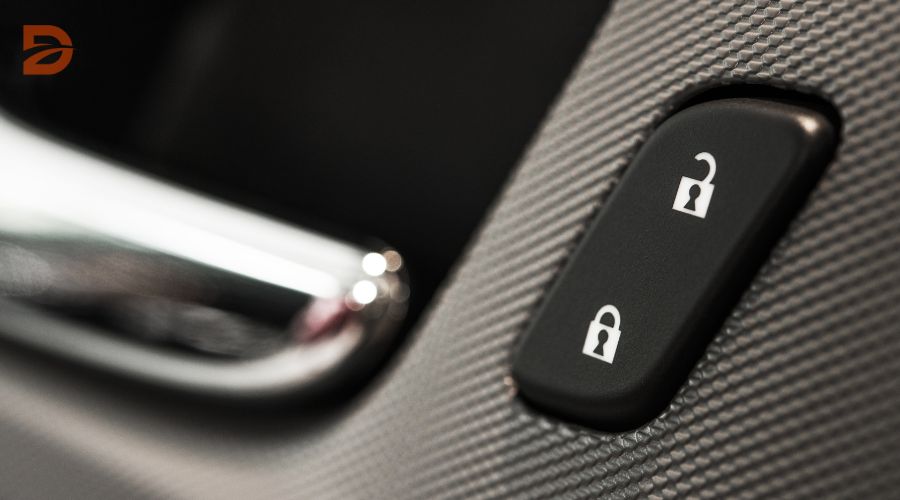Are you tired of paying high car insurance premiums? The good news is that the advanced safety features found in modern vehicles can help lower your insurance costs. But do you know which features make the biggest difference? Discover the secrets to slashing your car insurance bills by leveraging the latest in-vehicle safety technology.
Key Takeaways
- Vehicles with higher safety ratings from organizations like NHTSA and IIHS are generally less expensive to insure.
- Safety features like collision warning, lane departure warning, and automatic emergency braking can earn you discounts from insurers.
- Anti-lock braking systems and airbags are now standard, but additional advanced driver assistance technologies can further reduce your premiums.
- Insurers consider both the vehicle’s published safety ratings and the specific safety features it is equipped with when determining your rates.
- Carefully choosing a car with the right safety features can lead to significant long-term savings on your car insurance.
The Importance of Vehicle Safety Ratings
When it comes to purchasing a new vehicle, safety is a top priority for many consumers. Vehicle safety ratings provided by organizations like the National Highway Traffic Safety Administration (NHTSA) and the Insurance Institute for Highway Safety (IIHS) play a crucial role in helping drivers make informed decisions.
Understanding Safety Ratings from NHTSA and IIHS
The NHTSA rates vehicles on a 5-star scale, with 5 stars indicating the highest safety rating and 1 star representing the lowest. The IIHS, on the other hand, uses a more detailed system, assigning vehicles with designations such as “Top Safety Pick” or “Top Safety Pick+,” which signify superior crash test performance.
How Insurers Factor in Safety Ratings
Insurance companies closely monitor vehicle safety ratings, as they can be a significant factor in determining insurance premiums. Vehicles with higher safety ratings are generally considered lower-risk, potentially resulting in lower insurance costs for the owner. Insurers may even offer discounts for cars equipped with advanced safety features, such as collision warning systems or lane departure warnings.
Ultimately, understanding vehicle safety ratings is crucial for both consumers and insurers. By prioritizing safety when making a vehicle purchase, drivers can not only protect themselves and their loved ones but also potentially enjoy lower insurance premiums as a result.
Safety Features That Can Reduce Premiums
As the automotive industry continues to evolve, car safety features have become increasingly sophisticated, offering drivers greater protection and insurers the opportunity to provide discounts on premiums. Two such technologies that have proven their worth in accident prevention are collision warning and blind-spot detection.
Collision Warning and Blind-Spot Detection
Collision warning systems alert drivers when another vehicle gets too close, preventing potential collisions and reducing the likelihood of filing a claim. Similarly, blind spot detection notifies drivers of vehicles in their blind spots, helping to avoid sideswipe accidents during lane changes. Studies suggest that cars with blind-spot monitoring have a 14% lower crash involvement rate compared to models without the equipment.
Anti-Lock Braking Systems
One of the most impactful safety features in modern vehicles is the Anti-Lock Braking System (ABS). ABS helps drivers maintain control and reduce stopping distance during emergency braking, thereby preventing accidents. Vehicles equipped with ABS often receive discounts from insurance providers, as the technology has been shown to significantly reduce the risk of collisions.
As the global market for Advanced Driver-Assistance Systems (ADAS) is projected to grow by 12% annually, reaching $83 billion by 2030, insurers are taking note of the potential benefits. Research indicates that ADAS-equipped vehicles can reduce bodily injury and property damage claims by 27% and 19%, respectively. By incentivizing the adoption of these safety features, insurance companies aim to lower the frequency and severity of accidents, ultimately leading to more affordable premiums for consumers.
| Safety Feature | Impact on Accident Reduction | Potential Insurance Premium Savings |
|---|---|---|
| Collision Warning | 27% reduction in bodily injury claims | Up to $264 billion in cost savings if all relevant crashes are prevented |
| Blind-Spot Detection | 14% lower crash involvement rate | Estimated 25% reduction in car accident frequencies and $20 billion in insurance premium savings |
| Anti-Lock Brakes | Significantly reduced risk of collisions | Discounts offered by insurers for vehicles equipped with ABS |
Insurance premiums, vehicle safety features
When it comes to calculating your car insurance premiums, safety ratings are just one of the many factors insurance companies consider. While vehicles with higher safety ratings from organizations like the National Highway Traffic Safety Administration (NHTSA) and the Insurance Institute for Highway Safety (IIHS) may statistically have fewer and less expensive claims, several other cost factors can impact your insurance costs.
Some key elements that influence your insurance premiums include anti-theft devices, vehicle size, your driving history, where you live, credit history, age, and the coverage options you choose. Even though safer vehicles can potentially lead to lower insurance rates, the variety of factors involved means that buying a vehicle with advanced safety features doesn’t automatically result in cheaper premiums.
That said, certain vehicle safety features can still help reduce your insurance costs. Features like collision warning, blind-spot detection, anti-lock brakes, adaptive cruise control, and lane departure warning systems are known to lower the likelihood of accidents, which insurers often reward with premium discounts. Additionally, anti-theft devices and GPS tracking can decrease the risk of comprehensive coverage claims, also contributing to potential savings.
Ultimately, while vehicle safety is an important consideration, it’s just one piece of the puzzle when it comes to determining your car insurance rates. Understanding how insurers calculate premiums and the various cost factors involved can help you make informed decisions about your vehicle and coverage options.
Adaptive Cruise Control and Headlights
When it comes to vehicle safety features, two standouts are adaptive cruise control and adaptive headlights. These technologies not only enhance your driving experience but can also potentially lower your car insurance premiums.
Adaptive Cruise Control: This advanced feature uses sensors to detect the speed and distance of the vehicles ahead of you. It then automatically adjusts your car’s speed to maintain a safe following distance, slowing down or speeding up as needed. Studies have shown that adaptive cruise control can significantly reduce the likelihood of rear-end collisions, making it a valuable safety asset on the road.
Adaptive Headlights: Unlike traditional headlights, adaptive headlights bend and adjust the beam of light to follow the curvature of the road. This enhanced visibility can be particularly helpful when navigating winding roads or driving at night, as it allows you to see more of what’s ahead. Improved illumination can lead to better hazard detection and a lower risk of accidents.
Insurance companies recognize the safety benefits of these technologies and often offer discounts to drivers with vehicles equipped with adaptive cruise control and adaptive headlights. By demonstrating a reduced risk of accidents and claims, these features can help you save on your car insurance premiums.
When shopping for a new vehicle or considering safety upgrades, be sure to explore the potential cost savings associated with adaptive cruise control and adaptive headlights. These safety technology features can not only enhance your driving experience but also contribute to lower insurance rates, making them a wise investment in your vehicle and your well-being.
Lane Assistance and Departure Warning Systems
When it comes to vehicle safety features, lane assistance, and departure warning systems play a crucial role in accident prevention. These intuitive technologies help drivers stay centered within their designated lanes, reducing the risk of unintentional drifting and potential collisions.
Lane Keep and Lane Departure Warning
Lane keep technology ensures your vehicle remains within the marked driving lanes, automatically steering your car back between the lines if it starts to wander. On the other hand, lane departure warning systems alert you with a vibration or audible signal when your vehicle is departing its lane, allowing you to quickly correct your course.
According to a recent Consumer Reports survey, a majority of drivers expressed being “very satisfied” with lane centering assist (LCA) compared to lane departure warning (LDW) and lane keeping assist (LKA) systems. However, many respondents also noted confusion about the functionalities and distinctions between these various lane assistance technologies, highlighting the need for clearer communication and education.
While different car manufacturers offer diverse lane departure warning and lane-keeping assist packages, these systems typically rely on forward-facing cameras to detect the lane lines surrounding the vehicle. LDW and LKA are often linked and activated by default in many vehicles, while lane centering assist (LCA) usually requires the activation of adaptive cruise control and can be engaged through a button on the steering wheel.
By incorporating these advanced lane assistance features, drivers can enjoy enhanced safety and peace of mind on the road, reducing the likelihood of accidents and the need to file insurance claims. As technology continues to evolve, the integration of lane-keeping systems will play an increasingly vital role in accident prevention.
Airbags and Rearview Cameras
Airbags have been a staple in vehicle safety for decades, providing vital protection in the event of a collision. Over the years, these life-saving devices have become more advanced, with features like side window airbags offering even greater protection. Rearview cameras, on the other hand, have taken the industry by storm, significantly reducing blind spots when backing up and giving drivers a real-time view of their surroundings.
These safety features not only enhance accident mitigation but can also play a role in lowering your car insurance premiums. Insurance companies recognize the value of these technologies in preventing collisions and may offer discounts to drivers who have them installed in their vehicles.
The Impact of Airbags and Rearview Cameras on Accident Mitigation
Airbags have been proven to be highly effective in reducing the severity of injuries sustained in a crash. According to the Canada Motor Vehicle Safety Standards, all private passenger vehicles must include airbags as a mandatory safety feature. Additionally, the inclusion of side-impact and curtain airbags has further enhanced the level of protection for occupants.
Rearview cameras, on the other hand, have become increasingly common in modern vehicles, helping drivers navigate tight spaces and avoid potential collisions when backing up. These technologies have been instrumental in reducing the number of accidents, particularly those involving pedestrians and other vulnerable road users.
The Role of Safety Features in Insurance Premiums
Insurance companies closely monitor the effectiveness of safety features in mitigating accidents and reducing claims. Vehicles equipped with airbags, rearview cameras, and other advanced safety technologies may be eligible for discounts on their insurance premiums. This is because these features have been shown to lower the overall risk of accidents, making the vehicle less likely to be involved in a costly claim.
However, it’s important to note that the specific discounts offered by insurance companies can vary. Drivers should always check with their insurance provider to understand the potential savings they may be eligible for based on the safety features of their vehicle.
Anti-theft devices and GPS Tracking
Keeping your car secure is a top priority, and vehicle safety features like anti-theft devices and GPS tracking can not only deter potential thieves but also reduce your insurance premiums. Many newer cars come standard with anti-theft systems that use flashing lights, loud alarms, and warning stickers to scare off would-be criminals. Installing a GPS tracking device can also help you locate your vehicle if it’s stolen, increasing the chances of a successful recovery.
How Anti-Theft Devices Affect Premiums
Insurers often offer discounts to drivers who equip their vehicles with anti-theft devices and GPS tracking systems. According to industry data, some insurance providers offer discounts of up to 30% or more for fleets that have verified GPS tracking installations. This is because these safety features make it less likely that the insurer will have to replace your entire vehicle in the event of a theft.
- Insurance companies may provide discounts of 30% or more for fleets with verified GPS tracking installations.
- GPS tracking devices can trigger notifications for unauthorized movement or events like ignition or door opening.
- Some insurers offer discounts specifically for low-mileage vehicles tracked with GPS devices.
By using GPS tracking, you can also demonstrate safer driving habits, leading to further insurance savings. Many major insurers offer discounts of up to 25% to customers who install anti-theft devices like GPS trackers, and some states even mandate these discounts by law.
Conclusion
Owning a vehicle equipped with the latest safety features not only protects you and your passengers but can also lead to significant savings on your auto insurance premiums. By understanding which features your car possesses and how they are valued by insurance providers, you can take advantage of potential discounts and reduce your overall insurance costs.
From advanced braking systems and stability control to collision warning technology and lane departure alerts, investing in a safer car can pay dividends in the long run. Review your vehicle’s safety specifications and speak with your insurance company about the available discounts. When purchasing a new car, carefully weigh the cost of added safety features against the potential insurance savings you could enjoy.
By prioritizing vehicle safety and taking advantage of insurance incentives, you can not only enhance your protection on the road but also optimize your budget and enjoy the peace of mind that comes with knowing you’re driving a secure, well-equipped automobile. Stay informed, explore your options, and let your vehicle’s safety features work to your financial advantage.
FAQ
What are vehicle safety ratings and how do they affect insurance premiums?
Safety ratings provided by organizations like the National Highway Traffic Safety Administration (NHTSA) and the Insurance Institute for Highway Safety (IIHS) show how vehicles perform in crash tests. Vehicles with higher safety ratings are often generally cheaper to insure because they statistically have fewer and less expensive claims. Insurers may also offer discounts to drivers with safer vehicles.
What safety features can help lower my insurance premiums?
Besides the vehicle’s published safety ratings, several features can cause your vehicle to be safer and lower your insurance rates, including forward collision warning, lane departure warning, blind spot warning, and automatic emergency braking.
How do collision warning and blind-spot detection systems impact insurance?
A collision warning notifies the driver of an approaching vehicle with a sound or visual notification, so you won’t have to use your policy’s collision coverage. Blind-spot detection technology helps prevent accidents by alerting you to vehicles in your blind spots.
How do anti-lock braking systems affect insurance costs?
Anti-lock braking systems help to reduce the amount of space vehicles need to stop, which has helped prevent countless accidents from occurring. This can lead to lower insurance premiums.
How do adaptive cruise control and adaptive headlights improve safety?
Adaptive cruise control uses sensors to realize when traffic is beginning to move more slowly or when you switch lanes to pass another vehicle quickly. Adaptive headlights work by bending light around turns so the driver can see what lies ahead, which is especially important for preventing nighttime accidents on narrow, winding roads.
How do lane assistance and departure warning systems impact insurance?
Lane keeps technology makes sure your vehicle stays within the designated driving lane, steering your vehicle back in between the lines if you unexpectedly begin drifting across them. A lane departure warning notifies you of a vibration when your vehicle is departing its lane. These intuitive warning systems help you avoid accidents and reduce the need to file insurance claims.
How do airbags and rearview cameras affect insurance?
Airbags have become more intuitive and protective through the years, with features like side window airbags. Rearview cameras took the vehicle industry by storm a few years ago, significantly reducing blind spots when backing up and giving drivers a real-time view of what’s behind them.
How do anti-theft devices and GPS tracking impact insurance premiums?
Anti-theft devices now come standard in newer cars, deterring potential thieves. Having a GPS tracking device installed in your vehicle can also help you track down thieves and get your car back. Some insurers offer discounts for these safety features because it typically means they won’t have to replace your entire vehicle.










